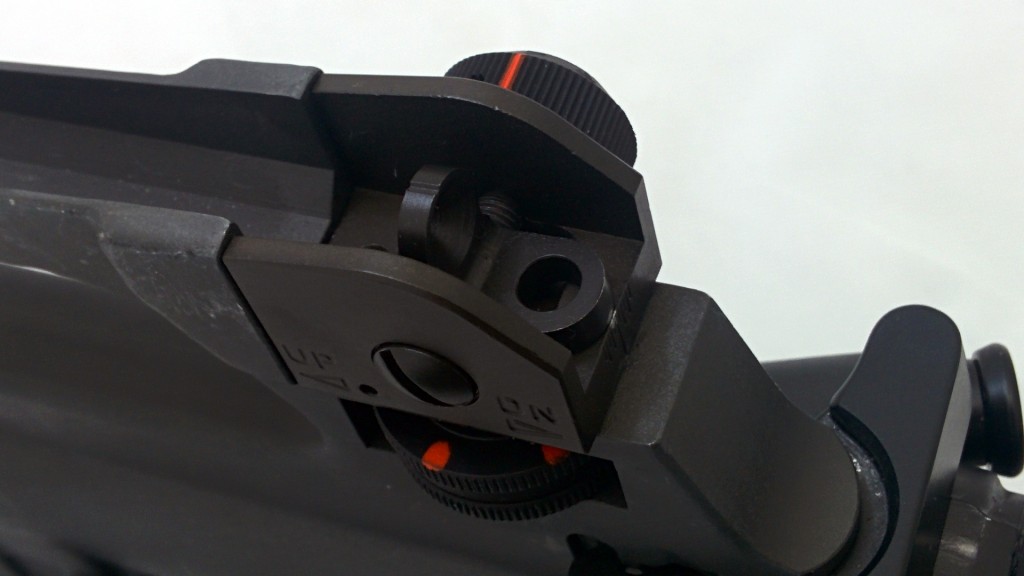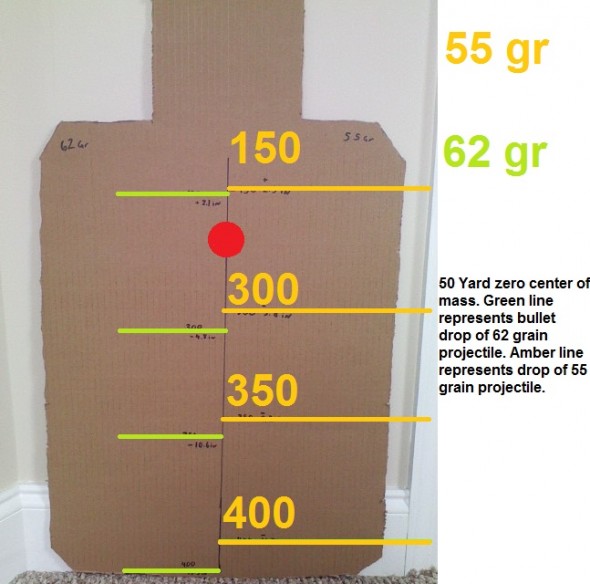The .223 / 5.56
The little cartridge our rifles shoot is a flat shooting projectile. As discussed elsewhere in the blog I use a 50-yard zero on my red dot and I can co-witness using the IBZ method with iron sights for a 50-yard zero as well. The trajectory of the .223 / 5.56 is roughly the following (depending on barrel length and ammo type ect.) with a 50 yard zero:
50 yards: zero
100 yards: 1 inch high
150 yards: 1.5 inches high
200 yards: zero
300 yards: 7 inches low
400 yards: 20 inches low
Do you see why the 50-yard zero is so popular? We have an easy to obtain zero (sight in 1 inch high at 100 yards) and it allows us to make easy hits at a variety of distances. Some people prefer the 100-yard zero but the bullet drop gets harder to manage at 300 and 400 yards. Anything worth shooting inside my typical shooting distances will not be affected by a 1.5-inch bullet rise with my 50 yard zero.
RDS:
Right side view of the Trijicon MRO: Check it out at Brownells
Red dot sights are extremely easy to use for hitting targets at a distance with the 50 yard zero. A direct hold on target will yield hits out to 200 yards. A common complaint is that a red dot will obstruct your target when shooting further distances. I find this quite false. Using a fifty-yard zero with a 2MOA red dot allowed me to take hits at 200, 300, and 400 yards without much effort. The red dot obstructs less of the target than my iron-sighted A2. For shots at 300 yards I hold my dot over the “face” of my target… in this case a steel silhouette. At 400 yards I place my dot on top of the head and allow the rounds to drop into the mid-torso of the steel. If you need some more reading, check out my post at TheTruthAboutGuns.com where I cover basic marksmanship for the new shooter. I like the red dot far more for shooting distance than irons. Much Easier.
A2 Irons:

For the Irons I had to do a bit more work for good shooting. I dialed in my range with the A2 drum before engaging my targets. You cannot reliably hold over with a 200 yard IBZ since the post starts to obstruct the target. To drop rounds onto the torso at 300 yards I have to aim for the “face” of the steel… but at that distance I had a hard time finding the steel and ditto for 400 yards. So we need to adjust the drum.
The biggest issue is target ID at any of these distances. I had a hard time seeing yellow steel against a sand background at 300 yards. The yellow steel at 400 yards was easier to acquire due to the green background behind it.
So that’s the basic meat and potatoes of my 50 yard zero. Shooting with red dot sights are easier than irons so consider it an upgrade to your iron-sighted setup. Again the limiting factor here is not the sighting system (irons vs RDS) but your ability to find your target at these distances. If you can save your coin for an ACOG then go for it! Advantages are what you *want* when shooting at these distances.
I have my eye on a TA44 for my A2: Also here is my first youtube TEST video. Be sure to put it to 720p for best viewing of the bullet flight.
Thanks for watching!








Whenever I hear about a new way to sight in an AR, my first thought is “here we go again”. This is the first one I have used that really makes more sense than what I learned in the Corps. I always used the 25 yard BZO and as long as you shoot silhouettes, it is great. But if you are shooting point targets or hunting, more holds are needed close and at long range. The irons on a few rifles have been replaced with scopes and this works better for me.
I really dig this article. It concisely puts into words ballistics. Well done. I am currently running a 14.5″ (16″ overall with the Epsilon break) for shear mobility. I am interested in modified ballistics for 16″. My rig is a kinetic science experiment